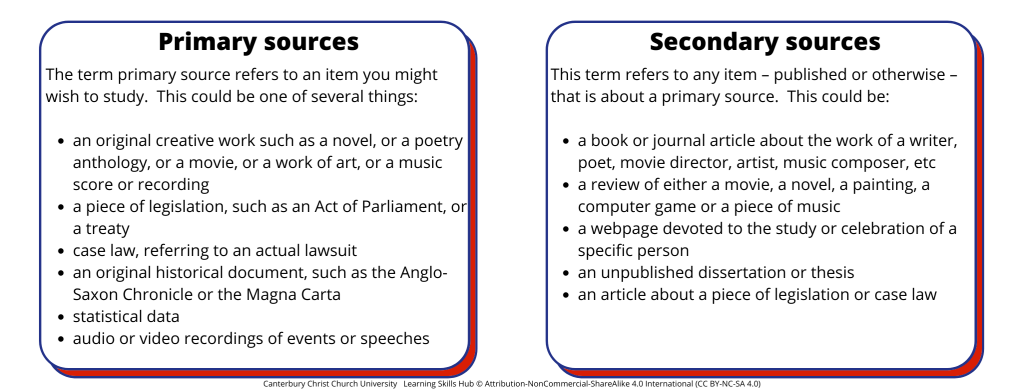What is meant by primary and secondary sources?
To begin with, it’s important not to confuse primary and secondary sources with primary and secondary education. Although they use the same words, they mean something completely different. Primary and secondary sources are the two main types of research material you can use.

When you refer to an example of a primary source such as those above and you write about them yourself – without looking at what other people have said about them – you are working directly with primary source material.
Sometimes the distinction can be different according to which subject discipline you are studying. For example, the Peter Jackson movie The Fellowship of the Ring can be considered a primary source if you are studying Media; however, if you are a literature scholar writing about other artistic/creative interpretations of the original novel by J.R.R. Tolkien, then the movie could be seen as a secondary source, since it is based on the novel, which is a primary source.
Books about individual people’s lives – famous or otherwise – may fall into either category. An autobiography (a book written by a person about their own life) would normally count as a primary source, but a biography (a book about a person, but written by someone else) could count as a secondary source if it covers aspects of that person’s writings or political career. Generally speaking, if a biography contains a bibliography (a list of other sources consulted by the author), you can regard it as a secondary source.
Either source type can provide a wealth of research material for use in your assignments.
 LearningSkillsHub
LearningSkillsHub